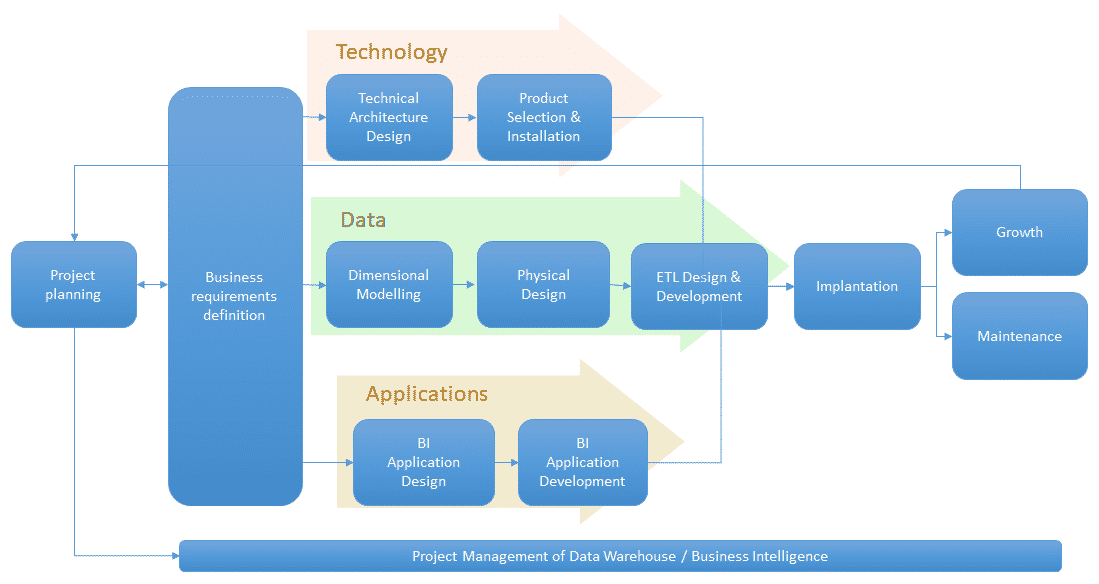Business intelligence is the set of strategies, applications, data, products, technologies and technical architecture, aimed at obtaining and managing knowledge, through the analysis of existing data in the organization.
It should be noted that the creation of a data warehouse represents the first step from the technical point of view, for the implementation of a complete and reliable business intelligence solution.
Data transformation
The transformation process is responsible for extracting the raw data from the data mentioned in the capture, apply a series of transformations of cleaning and structuring the information and finally load the database, this process is known as ETL processs (Extract, Transform and Load)
- Pentaho Data Integration (Spoon): This is a very versatile open source and easy to use tool. View Data Integration Usage examples
- Talend Open Studio: Open Source Tool.
- Datastage
- Integration Services (SSIS)
- Informatica Powercenter
Data visualization
Dashboard
Dashboard is visual summary of information about the business. All the information can be understood at a glance.
Dashboards use Key Performance Indicators or KPIs.
Dashboards types
- Scorecard (Dashboard)
- Digital Dashboards (digital control panel or executive dashboards)
Useful tools
Online analytics processing (OLAP)
OLAP streamlines non-predefined queries over large data sets.
See more analysis as HOLAP, ROLAP y MOLAP.
Useful tools
Reporting applications
Reporting applications predefined aggregate data views, in order to keep your users informed about the status of your business.
Useful tools
Data mining
Data Mining discovers patterns in large volumes of data, in such a way that the patterns obtained allow the extraction of knowledge that is understandable by human beings.
Useful tools
Business intelligence project life cycle / Data Warehouse
Reasons for failure of business intelligence projects
Different studies indicate that around 60% of business intelligence projects fail, so knowing the reasons of these failures can make our project a success.
Reasons of failure of business intelligence projects can be summarized in:
- Focusing mainly on technology instead of business needs, people and processes.
- Lack of sponsorship on the part of the management or the middle management.
- Do not define a scope or this is not accurate.
- Undefined and difficult to structure requirements until they have been implemented.
- Inability to structure a long-term sustainable architecture.
- Inability to provide quick solutions to managers anxious for short-term information.
- Impossibility to obtain medium-high quality data.
- Lack of scalability and system evolution.
- Do not consider future requirements, in terms of new users or data sources.
- Try to make a prototype of tests become the definitive solution.
- Excessive dependency of a supplier, tool and implant.
- Must be able to zoom in order to see the details of the data, but without having to replicate the transactional system.
- Over-detail (or granularity) of data can make the project an unapproachable problem.





0 Comments